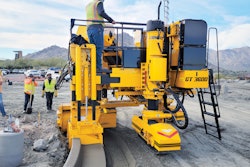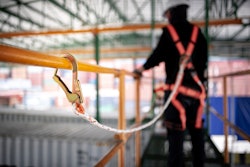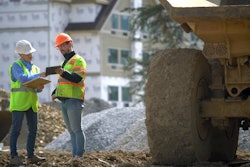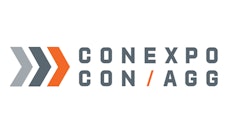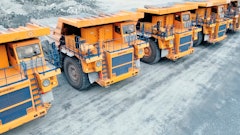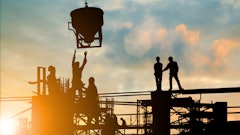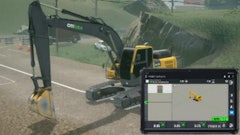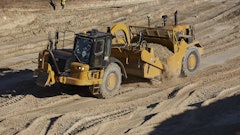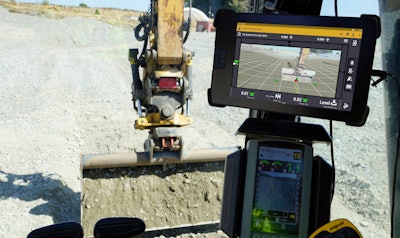
Technology is an important part of the construction industry because it helps make processes more reliable and simple. Before prepping a construction site, it’s worth considering the technology that can be used. Although there are many kinds of construction site preparation technology, the newest and most popular tend to get the limelight. This can result in more suitable technology being overlooked.
Technology distributors and experts in the technology field can partner with contractors and companies to help find the best and most effective technology for their jobsite. Site prep technology is useful in aiding productivity, cost reduction, efficiency, accuracy and time management.
Often Overlooked Technology
When selecting construction site preparation technology, it is common for people to be drawn to the most popular and appealing items. This causes beneficial—but lesser-known—technology to be overlooked. Sometimes the most popular technology is not the most useful or suitable equipment for everyone.
Five site prep technologies that tend to be neglected include:
- Augmented reality
- 2D
- Depth and slope
- Laser systems
- Ground penetrating radar (GPR)
These five items are less sought after but can be instrumental when used in certain situations.
Augmented Reality
In the case of augmented reality (AR) technologies, people tend to forget how useful they can be onsite.
“If you are a contractor that's using products that can produce a three-dimensional model, ... you can carry those models into the field and display them on a phone or a tablet ... and there's just so much value to that throughout the entirety of the construction process,” said Steve DiBenedetto, Trimble Software product manager.
DiBenedetto explained that even before breaking ground, AR technology can provide the benefit of showing others a visual of what the finished construction will look like. After breaking ground, this technology can also be used to help workers see the hidden aspects of the jobsite such as underground utilities.
DiBenedetto said, “[It is able] to give everyone a site awareness of where things [are] that you can't quite see—whether they're underground or even if they're not installed yet— where those items are going to be.”  The Trimble Stratus drone data platform is designed specifically to help construction contractors make better use of drone data for decision-making. The software can help track progress against design with quick volume calculations of moved material, provide topo surveys without a survey crew and deliver large amounts of information as easy-to-read 3D visual data.Trimble
The Trimble Stratus drone data platform is designed specifically to help construction contractors make better use of drone data for decision-making. The software can help track progress against design with quick volume calculations of moved material, provide topo surveys without a survey crew and deliver large amounts of information as easy-to-read 3D visual data.Trimble
AR technologies are not often the first things that come to mind when going over construction site preparation technology options. Even with these benefits and uses, it is often overlooked as it’s not the most well-known technology to use in site grading and site prep.
“It does require a little bit of site prep. It does help if you have an architectural model or some kind of 3D model and not all contractors have that,” DiBenedetto continued. “Also, I think some of it’s just awareness. People don't necessarily think that putting bunny ears, as you would [on] a Snapchat, on yourself can actually have traditional real value on a jobsite. Whereby you're bringing in a real model of what the site will look like.”
Fun filters on popular social media platforms or in editing apps use AR. These filters seem more whimsical rather than practical, but that same technology can be used to create models of what a construction site might look like when completed. It can also indicate what the underground area of the site has and generally how it looks and where to avoid.
Because of the connection to gaming and filters, construction contractors and workers often overlook AR. However, it is an important aspect of visualization equipment that should be considered seriously when beginning site prep.
Grading Basics
In site grading technology, just like anything else, there are popular picks and options that tend to be more intriguing. Because of this bias, the simple basics are too often forgotten. Some of the basic technologies are:
- 2D: 2D technology is an important part of machine/grade control. While not quite as complicated as 3D technology, it is perfectly capable and cost-effective.
- Depth and slope: Depth and slope technologies are helpful before starting and when completing the site grading process. This type of technology can help with lessening the workload of operators and make grade checking easier.
- Laser systems: Laser systems are designed to make the overall construction site preparation process easier. This technology makes site grading and leveling more accurate and simple.
 Caterpillar
Caterpillar
These three are just some of the basics that may be disregarded for site prep.
“Some people tend to go to the shiny new technology … [or] the sexy technology GPS that everybody talks about, but they might have a 2D job [and] the standard excavator system would work just perfectly for them,” Hagemann said.
Often, people are drawn to the fancier or newer technology, and the basics start to go unnoticed. Without fully understanding what their project needs, it can be easy for contractors or construction companies to select what is most popular at the time. Unfortunately, it’s not that simple, and it can sometimes be to their detriment to go with the favored technology option.
“If you're working in an environment where GPS would not get signal … you can't use GPS because, physically, you can't see the satellites. It's 100% consulting with the customer on their application, their environment and their accuracy needs,” Hagemann said.
Gaining the knowledge necessary on a jobsite and what requirements are needed is essential to properly supply a construction site with grading and preparation technology.
GPR
In prepping a construction site, many factors come into play to ensure a safe building environment. Marking hazards like water, gas lines and numerous other utilities is critical before the building begins. Worker safety is important and without having things properly marked, these hazards put worker safety at risk . GPR is a technological route for doing this kind of marking.
“Historically, the industry has relied on paint marks on the ground, followed by the tedious process of potholing down to locate existing utilities and then marking them to prevent a strike. But, sometimes the paint marks are wrong, and they don’t provide needed information regarding depth,” said Troy Dahlin, vice president of heavy construction, US/CAN for Leica Geosystems—part of Hexagon.
With human inconsistencies, there is the risk of putting workers in a potentially hazardous environment and the risk of causing a major setback on the construction project.
Dahlin said, “GPR gives contractors the ability to map proper location and depth without the man hours and the equipment hours traditionally used to properly mark utilities. This information can be incorporated into the model, reducing the chance of an accidental utility strike.”
GPR provides the worksite with additional accuracy and protection against human error and the possible dangers that go with that. This method saves time and money on the jobsite. Despite these benefits, it is still often overlooked for site prep technology.
“There’s a misperception that it’s more difficult to use than it is. Because this type of technology is often performed by a licensed service company, the perception exists that you must be a geologist to understand how to use GPR,” said Dahlin.
Dahlin explained that software, like the one at Leica, is created to be user-friendly and easy to follow and successfully use even for construction workers who are not familiar with the process.
What to Consider With Site Prep Technology
When considering site prep technology for the jobsite, more is involved than just looking at what everyone else has. Going in and discussing the site circumstances and needs with a site prep technology expert is the best way to get the proper technology for the job. Technology distributors are a great resource for this kind of thing.
“They're the experts in providing and applying the solutions, they are going to be able to ... partner up with you to make sure that you're taking full advantage of the investments that you're going to be making in this technology,” said DiBenedetto.
Another thing to consider is the continuity of the technology. If continuity is not something taken into account, the chances of data getting lost are much higher.
Dahlin said, “If you’re preparing a site and then performing the work in two different ecosystems, important details are often lost in translation. Consider the data flow; the continuity of information, from pre-work to work to post-work; and the ease with which that information is used and shared.”  Caterpillar
Caterpillar
Hagemann said that it is extremely important to consult with the experts to get the proper equipment for the jobsite and work needs. This process will help companies and contractors get the technology that will work best for them rather than what is new or popular.
Improve Construction Site Preparation With Technology
Technology is very useful in day-to-day life and it can be impressively useful in the construction industry. The site prep process can be long and tedious and comes with an assortment of setbacks. Integrating technology into the site prep process can improve the overall completion and course of action for contractors.
Some improvements include:
Productivity
Accuracy
Efficiency
Time management
The benefits of using the proper site prep technology for the job are towering. When considering site preparation technology, think about the importance of getting the equipment best suited for the job at hand but also consider the improvements desired.
According to Hagemann, things like GPS/GNSS technologies, data collection and 2D/3D machine guidance can improve accuracy and efficiency.  Trimble's Siteworks Machine Guidance Module provides surveying and layout support as well as on-machine excavator guidance and operator assistance. The GNSS receiver and field tablet can be quickly and easily moved from a pole to the machine and between multiple machines on multiple job sites.Trimble
Trimble's Siteworks Machine Guidance Module provides surveying and layout support as well as on-machine excavator guidance and operator assistance. The GNSS receiver and field tablet can be quickly and easily moved from a pole to the machine and between multiple machines on multiple job sites.Trimble
In addition, DiBenedetto said that unmanned aerial vehicle surveys and AR can improve accuracy. He also said that AR can be a very cost-effective solution to surveying.
Dahlin mentioned that GPR technologies create cost prevention for projects by avoiding project shutdowns due to utility strikes and things of that nature.
Overall, site prep technology can be a significant advantage in the preparation process. Adding accuracy, proficiency, cost reduction, efficiency and time management to the construction project, site prep and grading technology are valuable players in the process. It is important to discuss the jobsite requirements with the technology distributor before selecting technologies. Many types of site prep technology are overlooked and this might lead to unsuitable technology for the job and missed opportunities for better accuracy and productivity.
To ensure that construction site preparation goes smoothly, discuss with an expert before jumping in. Getting the proper equipment and technology could result in a quicker, more cost-efficient and better time-managed site prep process.





